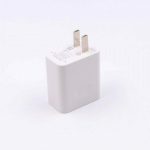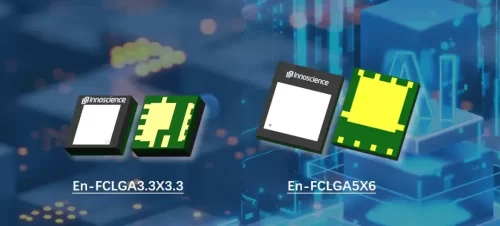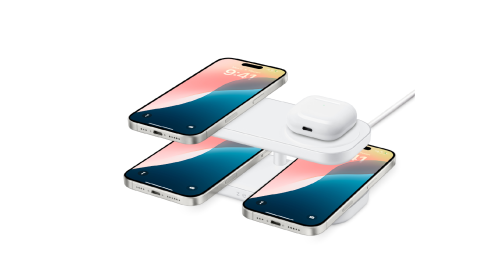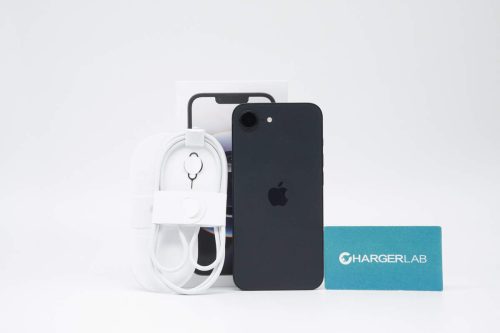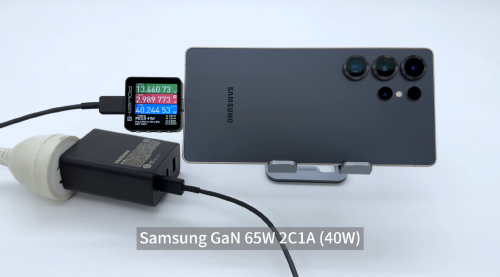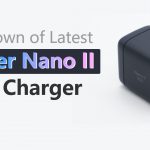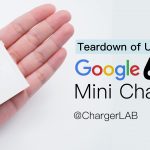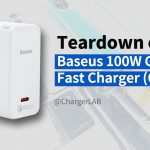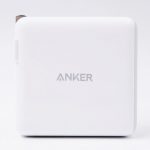The Huawei 40W SuperCharge SCP Charger is the in-box charger that first came along with the Mate 20 series. It is also the in-box charger of this year's Mate 30 series, and continues to be one of the fastest smartphone in-box chargers on the market right now. Here's our teardown review.
I Design
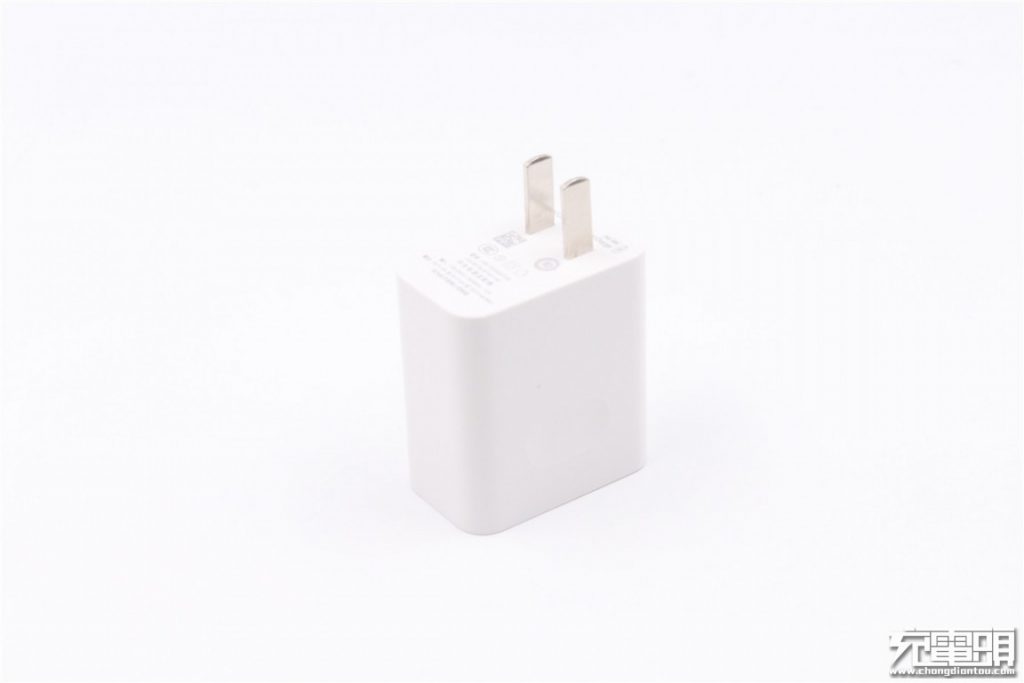
The charger is made of flame-retardant PC+ABS material, with a gloosy finish to the main body, and a matte finish on the plug and output panels. Unfoldable CN prongs.
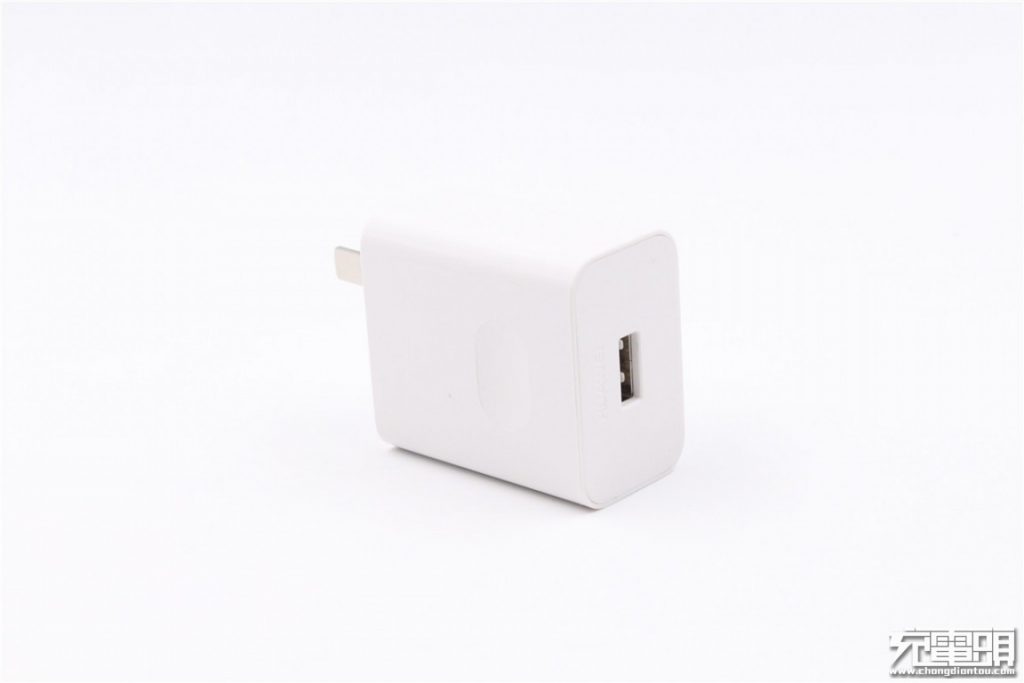
A groove design for better grip.
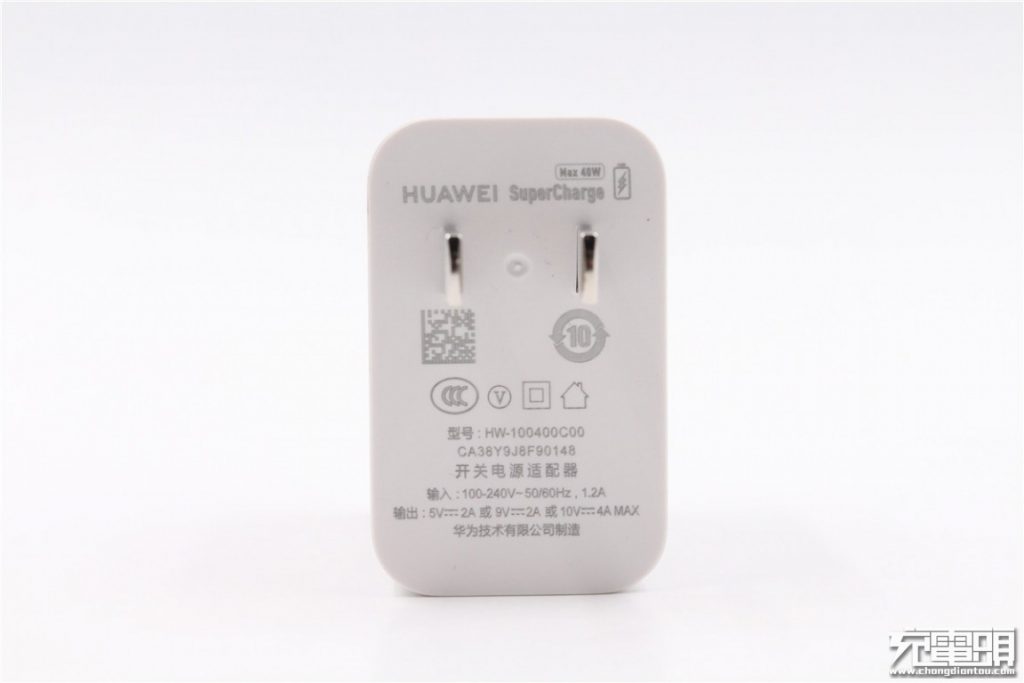
Specifications:
Model HW-100400C00
Input: 100-240V 50/60Hz 1.2A
Output: 5V/2A, 9V/2A, 10V/4A Max
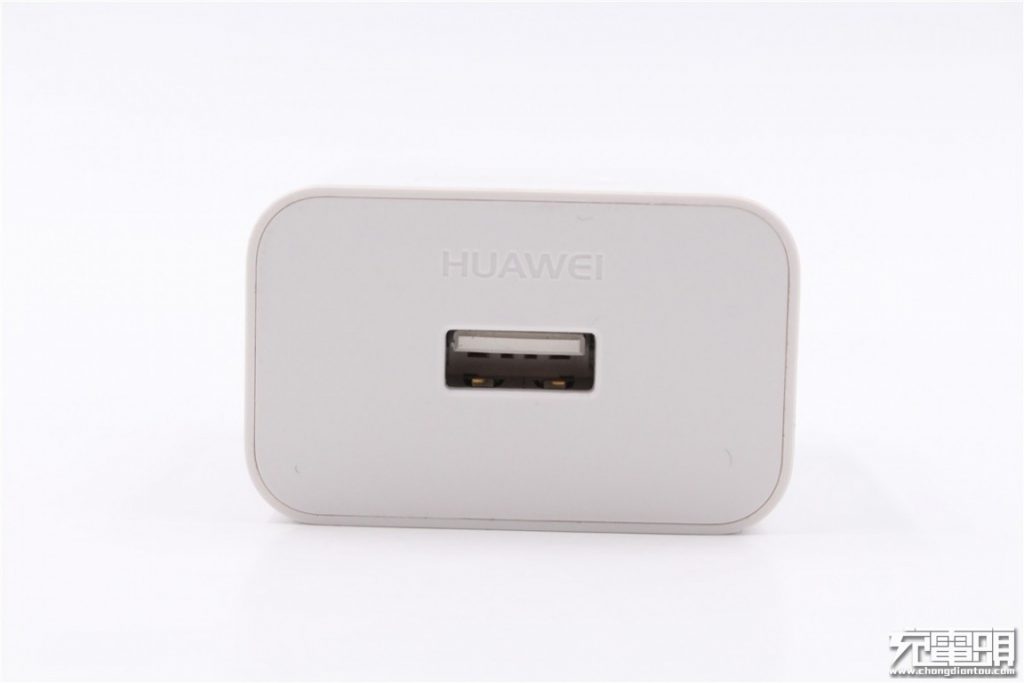
A single USB-A port with Huawei logo on top.
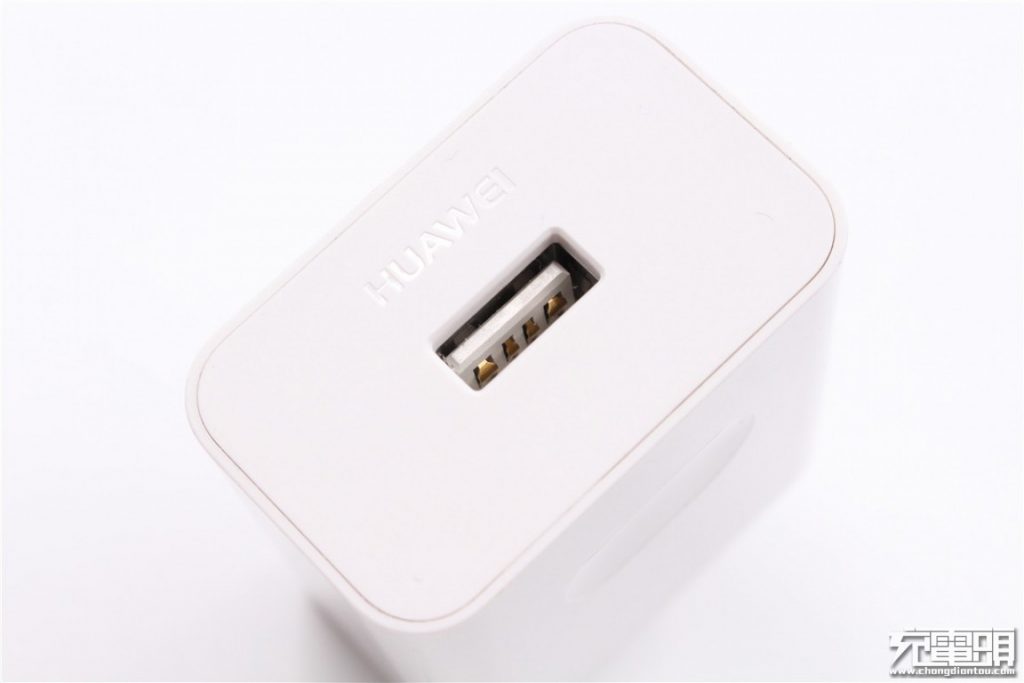
Close-up the USB-A port. We can see the four pins all have a normal width (not widened for higher amperes).
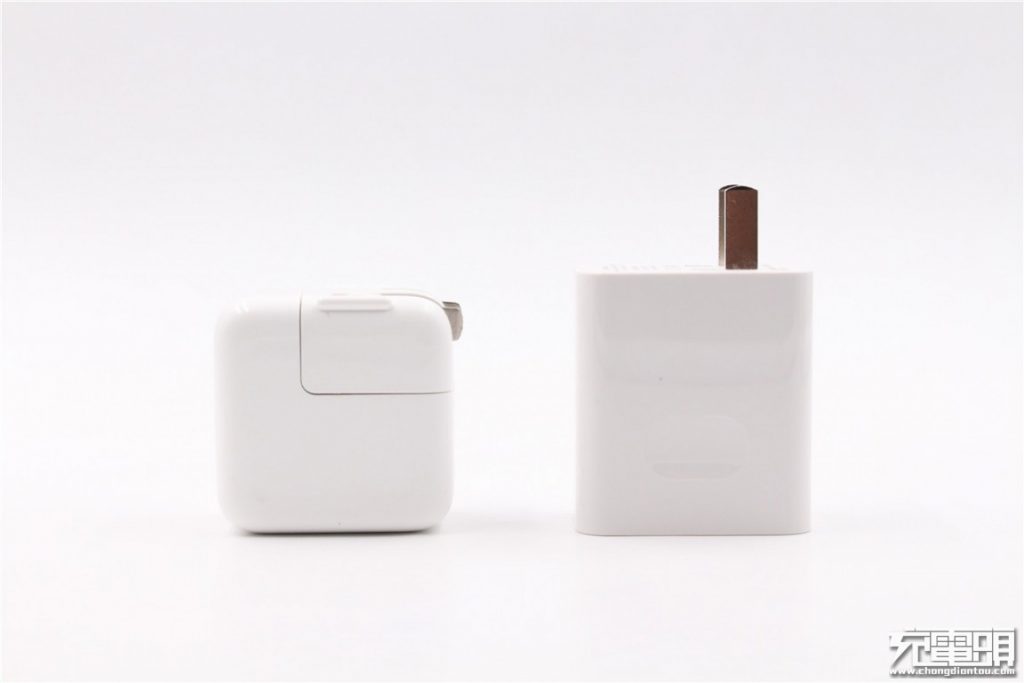
Compared to the Apple 12W charger.
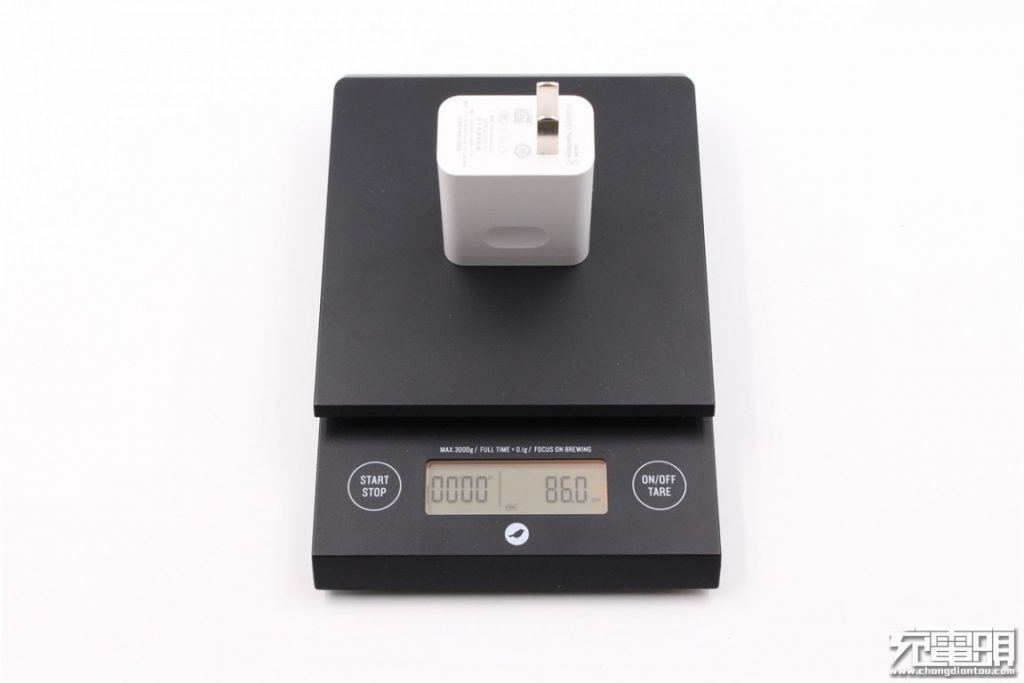
It weights 86g/3.03oz
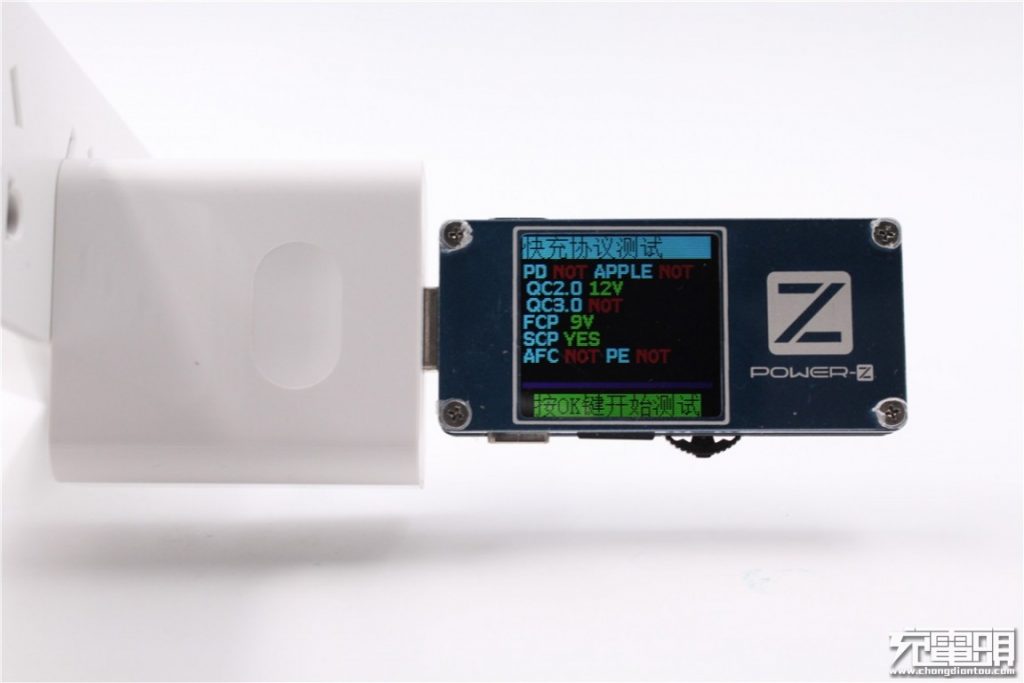
Using ChargerLAB Power-Z FL001SUPER USB power tester, we know that it supports QC2.0, FCP, and SCP protocol.
II Teardown
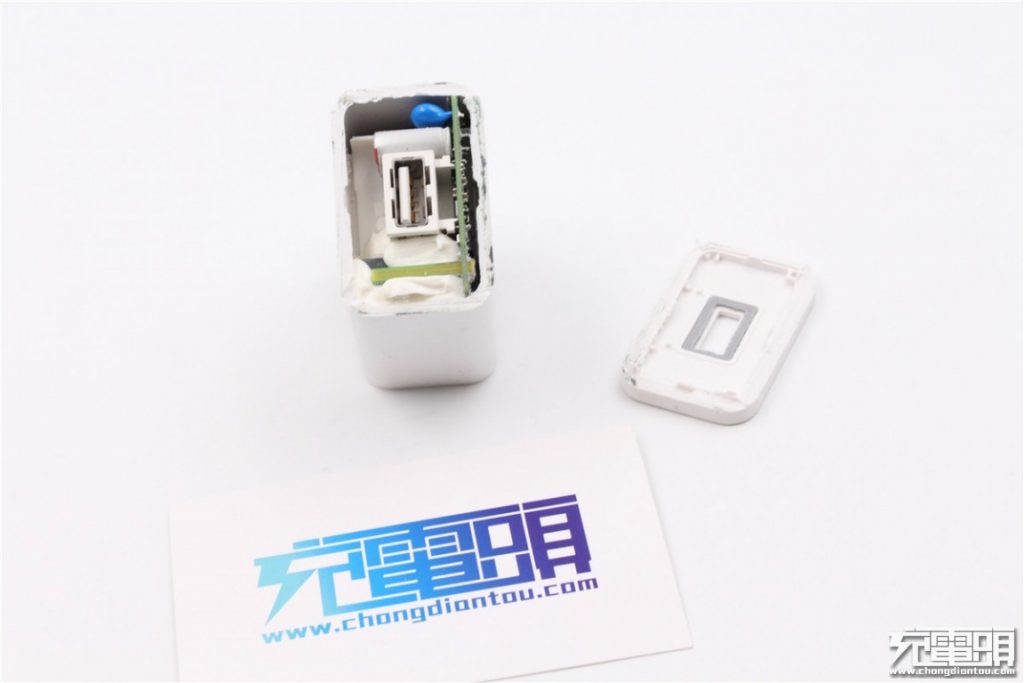
The ultrasonic welding process of charger case is very firm. We ended up cut it open.
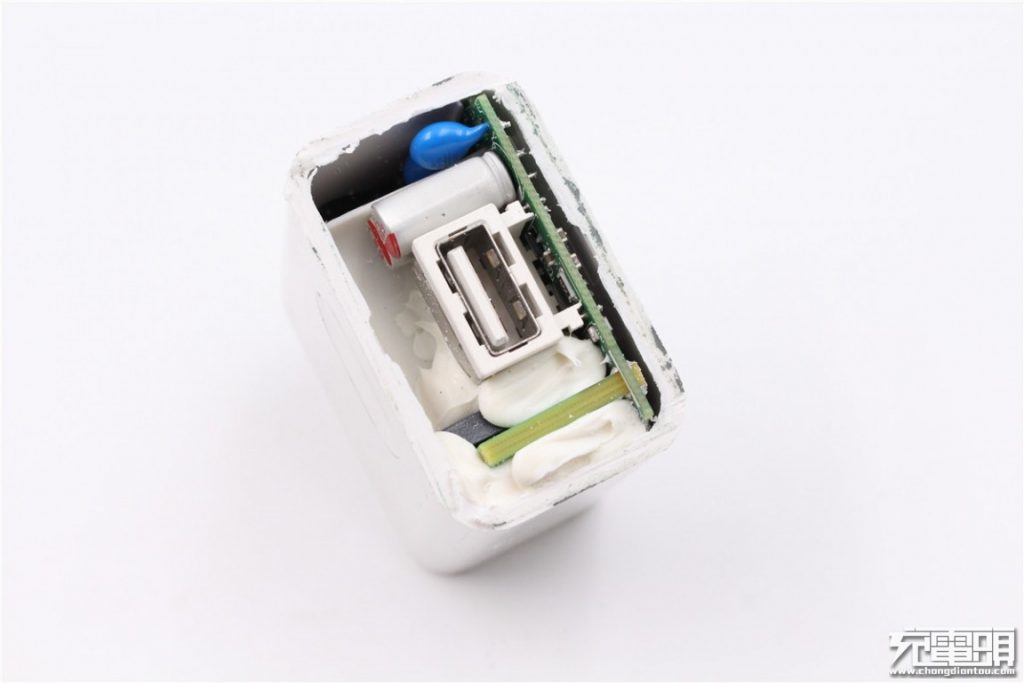
A lot of white glue is used between the internals and the outer casing, and the internal PCBA could not be taken out at all easily.
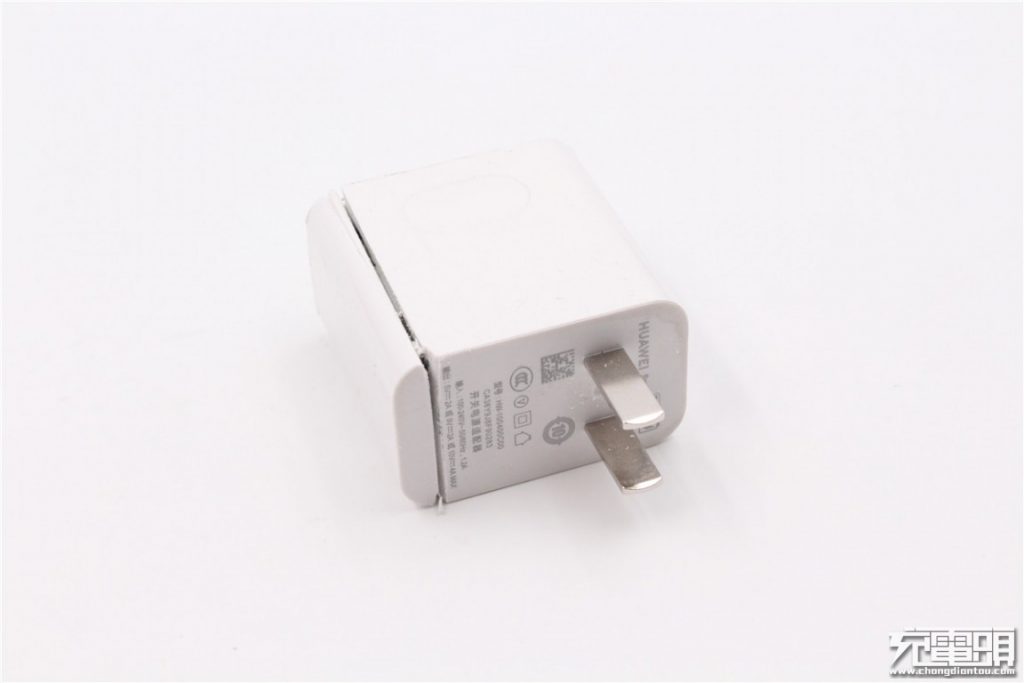
So we cut it again, from a different angle.
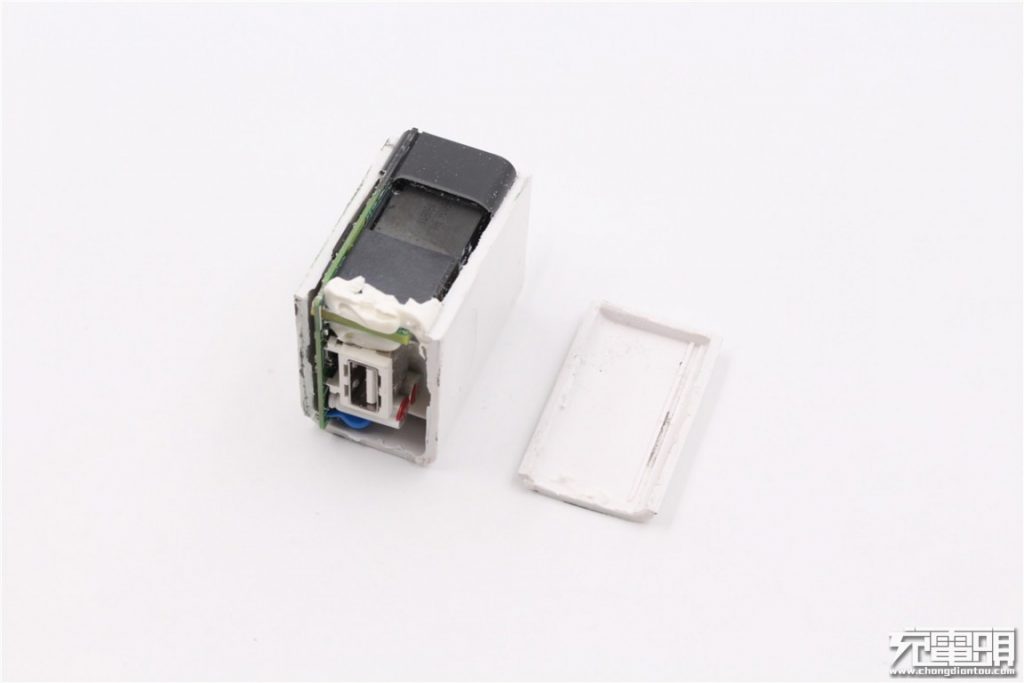
There we go.
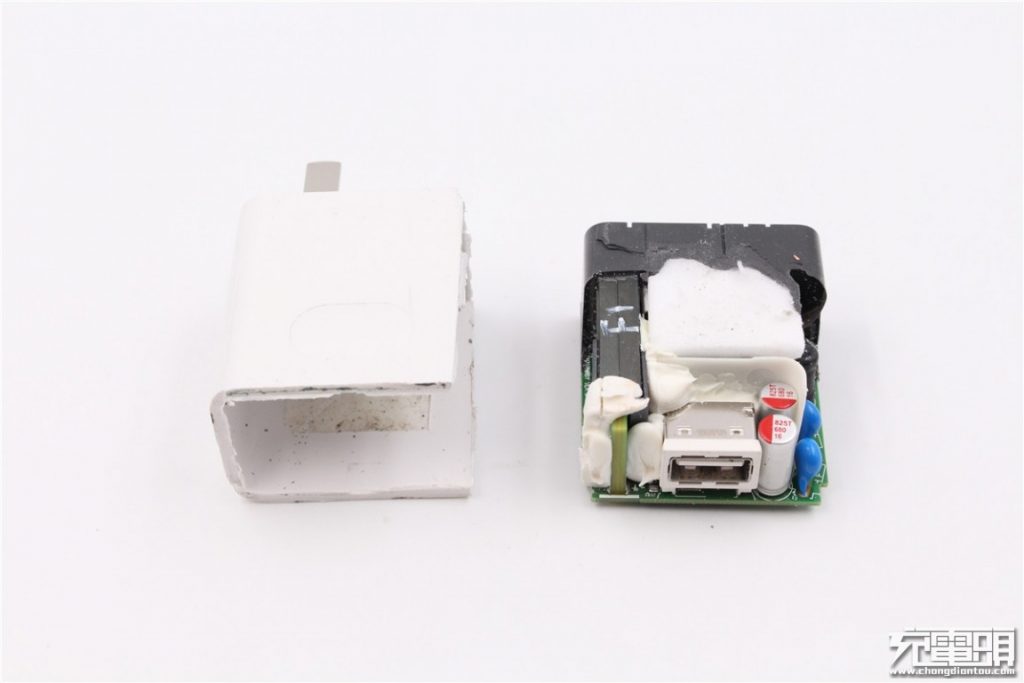
Now we can remove the PCBA out.
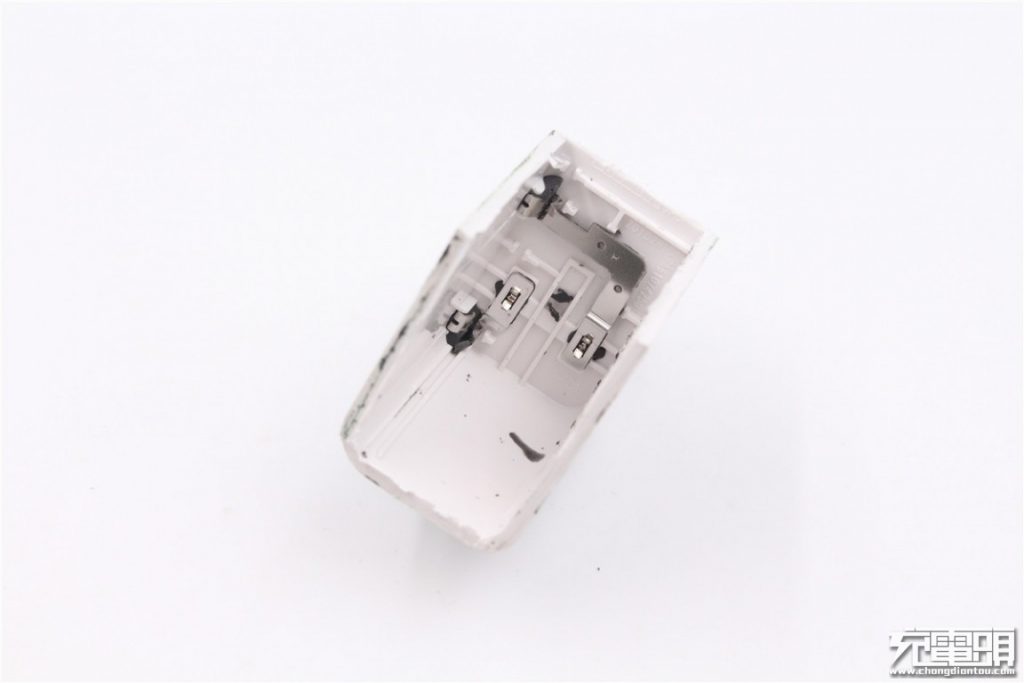
The pins inside the housing and the PCB board use contact connection.
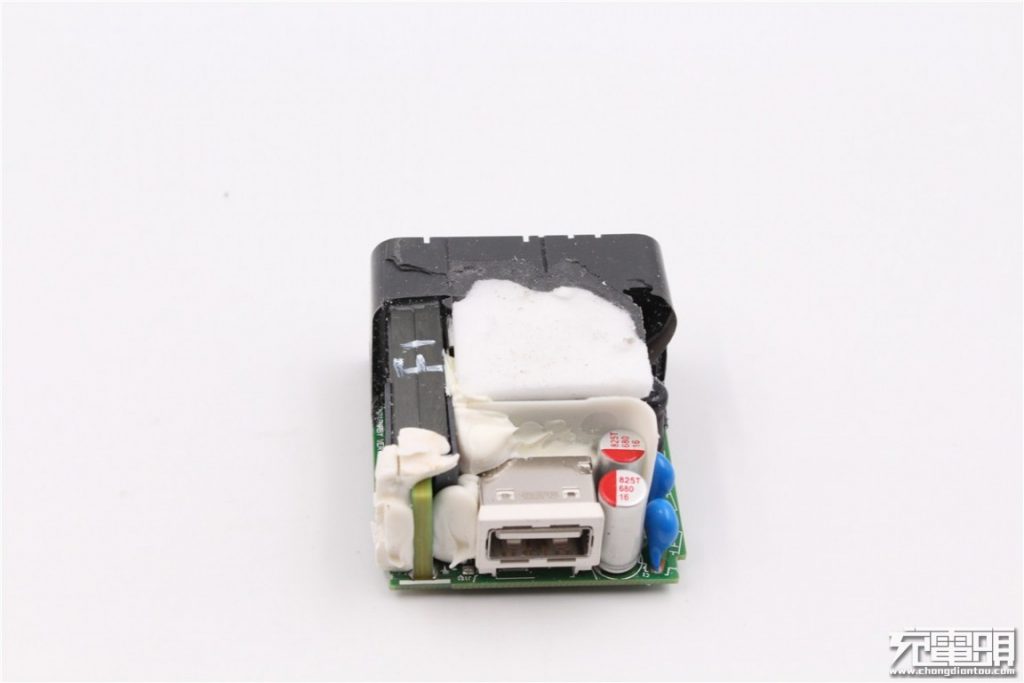
The components near the output port are filled with white glue; the front side is applied with a white foam to prevent the primary and secondary from damage in case of capacitor leakage, a nice touch.
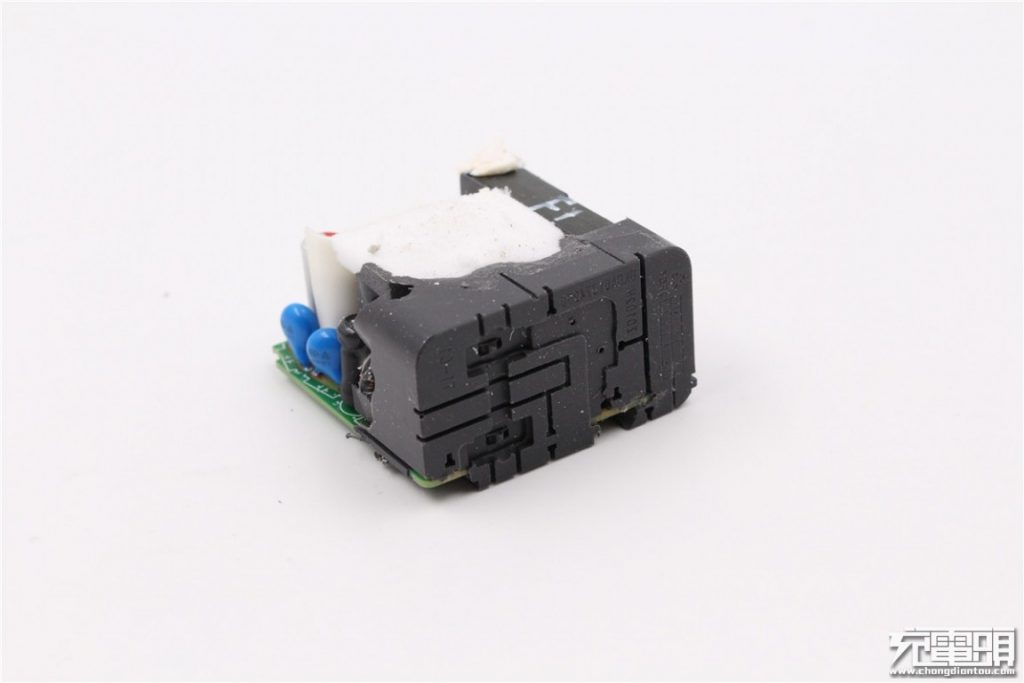
The input side of the PCBA is filled with black thermal adhesive, which is closely attached to the outer casing to provide good thermal conductivity.
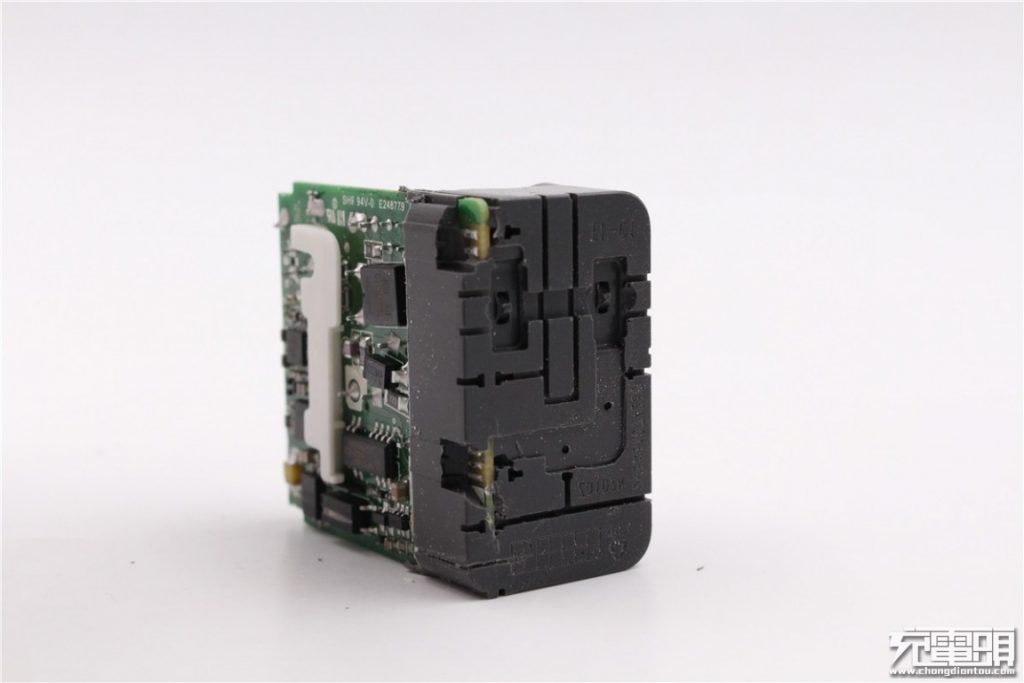
Some areas are left out for power input pins.
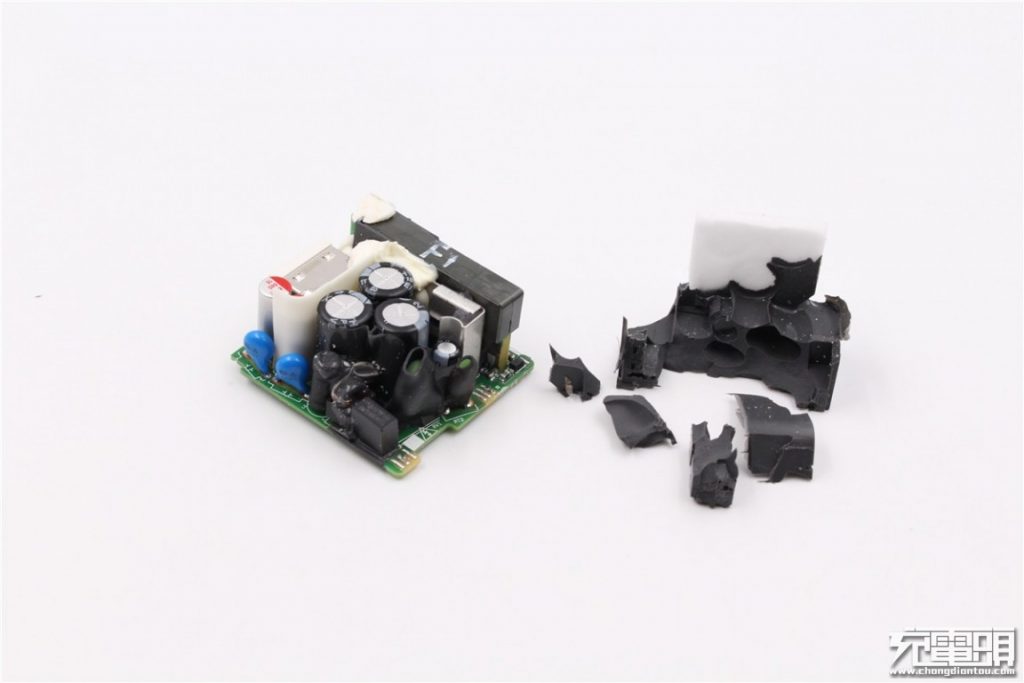
The black thermal paste can be easily separated from the PCBA.
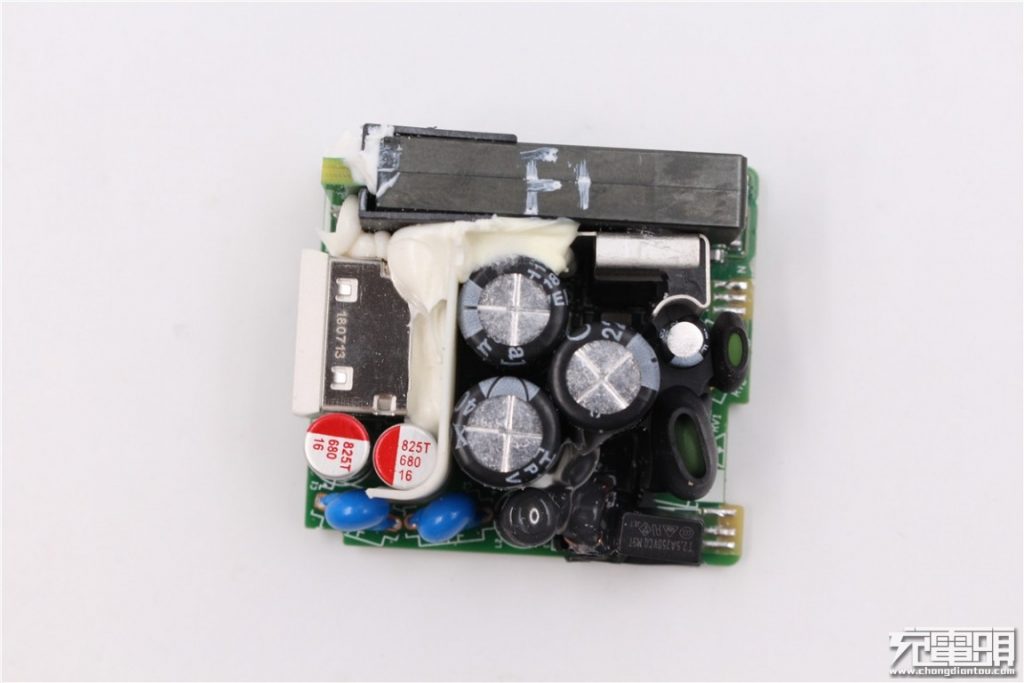
Front view of the PCBA. The output side uses two solid capacitors for filtering, specifications 16V 680uF. The USB-A female port has 180713 marking. An insulating spacer is fixed by glue, which separates the primary side and secondary side.
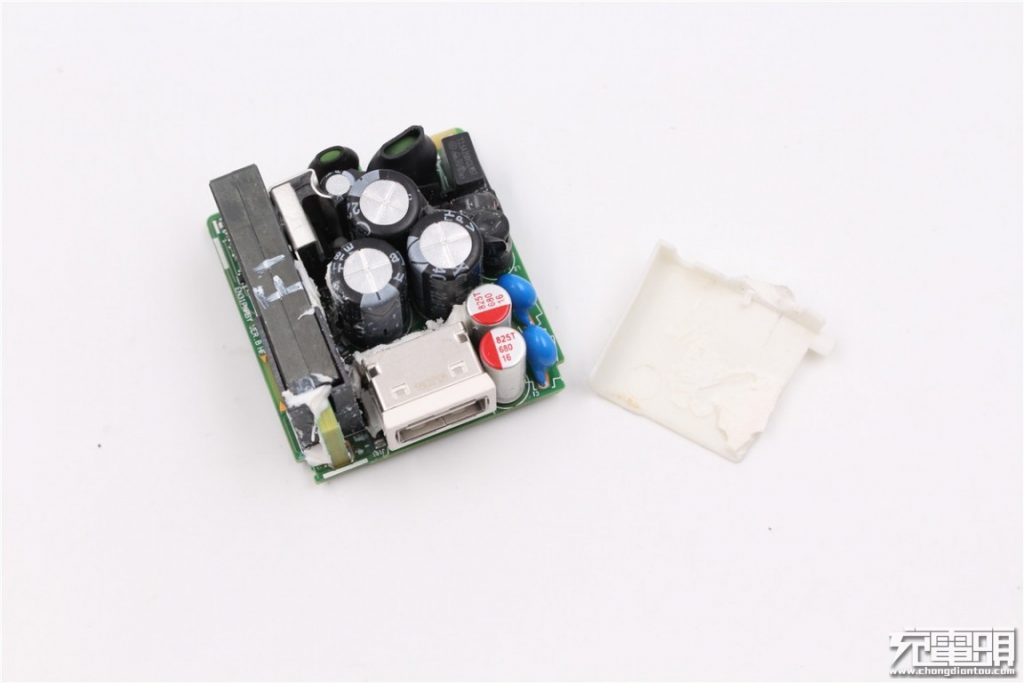
Carefully clean the white glue between the components and remove the plastic insulation plate between the primary and secondary.
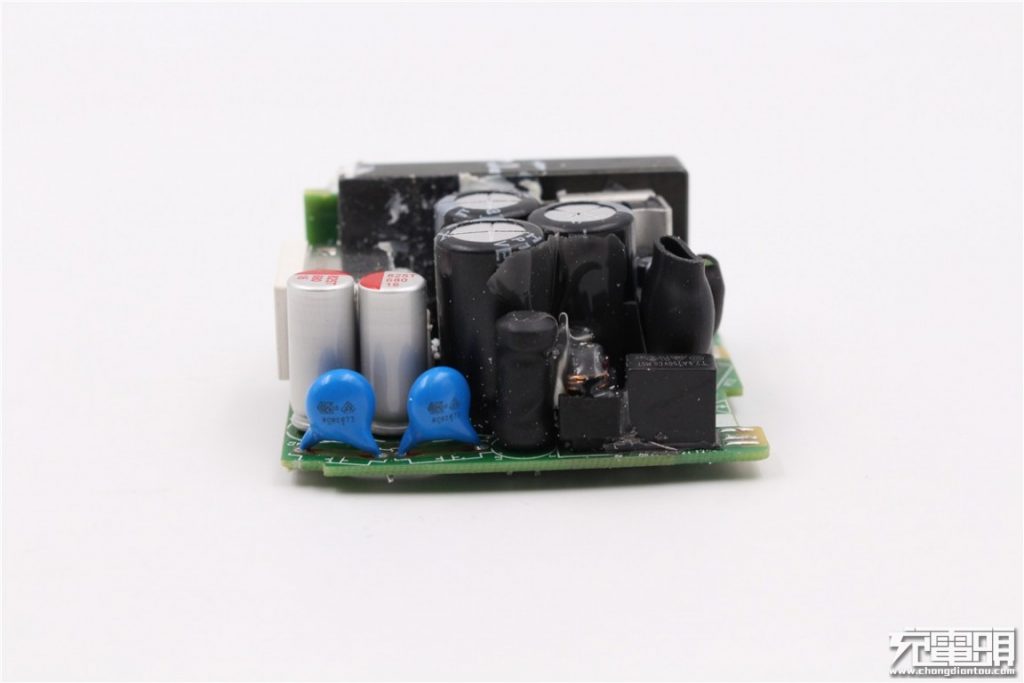
Two output anti-interference Y capacitors on the side of the PCB.
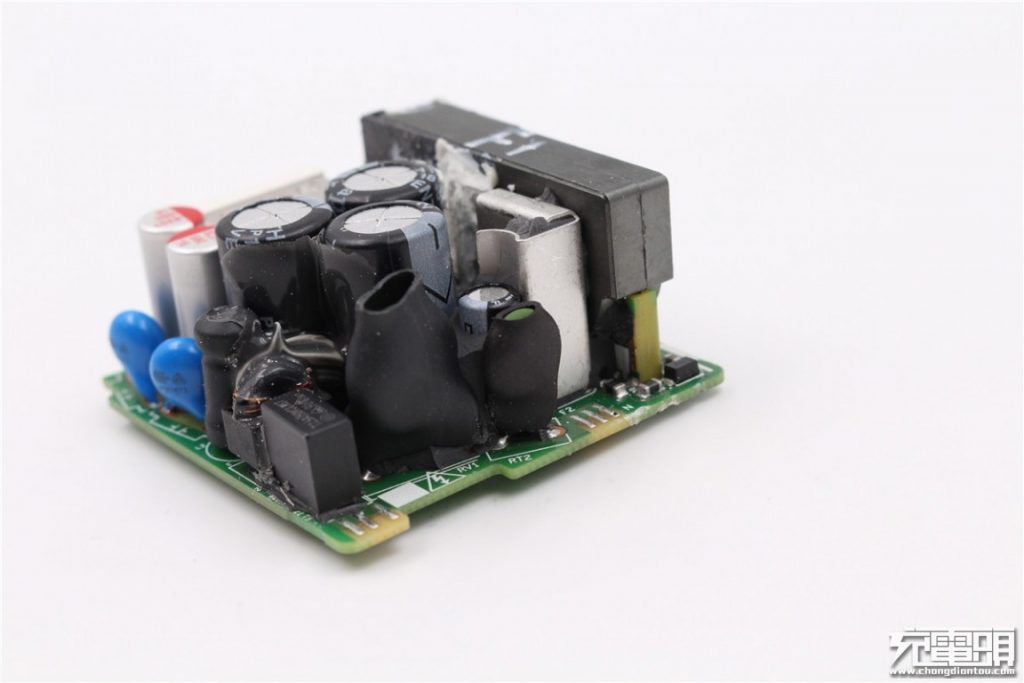
View from another angle.
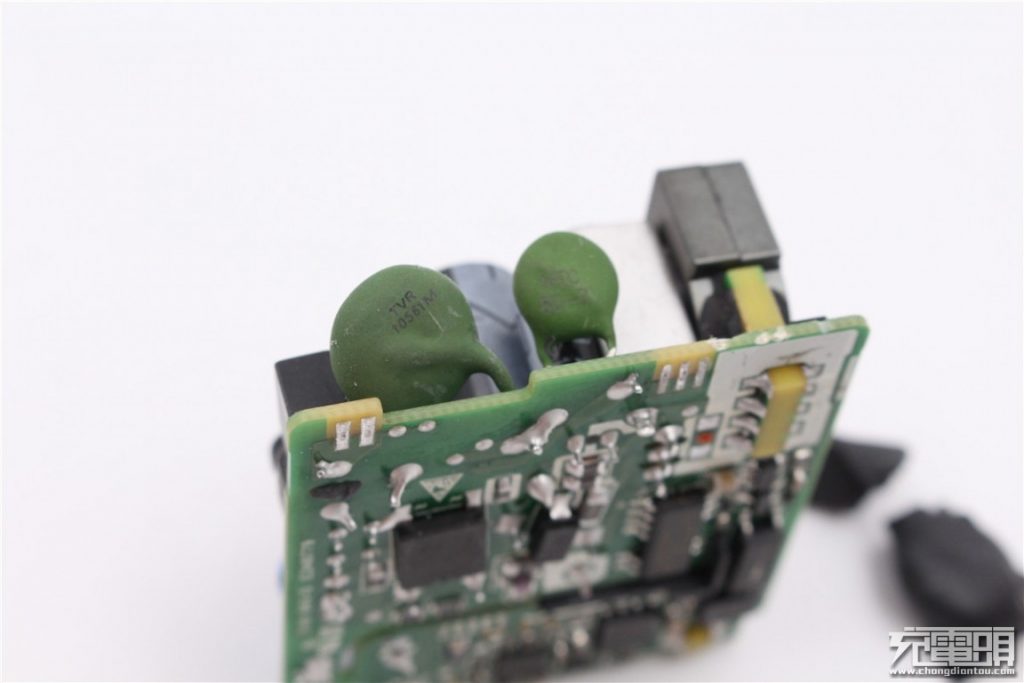
Remove the black rubber shell reveals two green components, the smaller one is the NTC thermistor to reduce the power surge, and the other is a varistor for overvoltage protection.
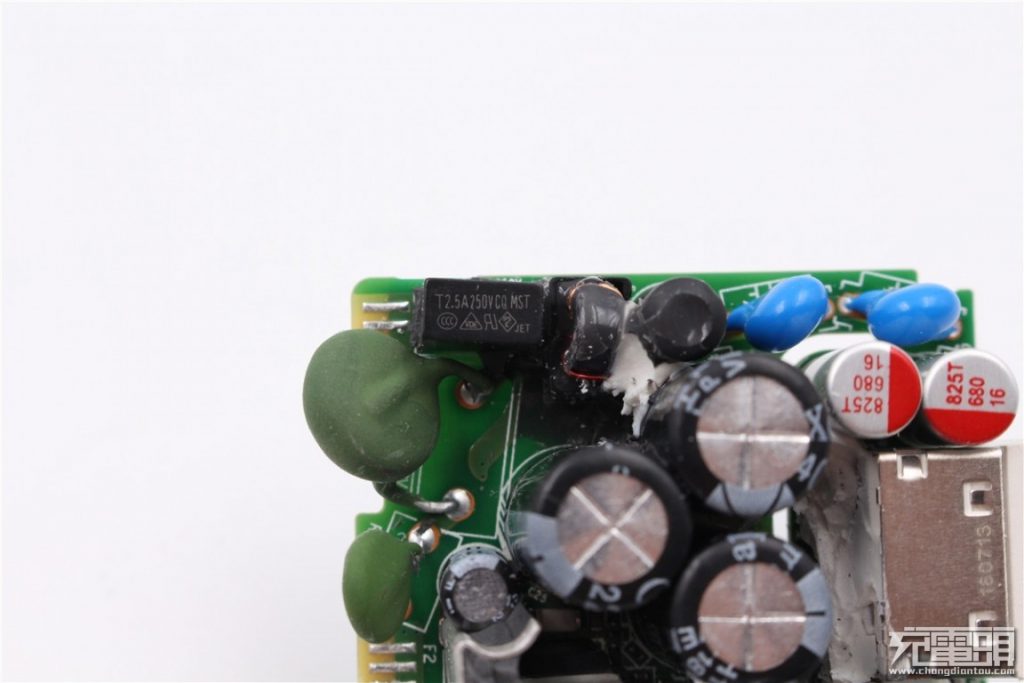
The black square is a slow-blow fuse, 2.5A250V, with a common-mode inductor coil next to it. A hollowed-out design for insulation can be seen from the left side of the solid-state capacitors.
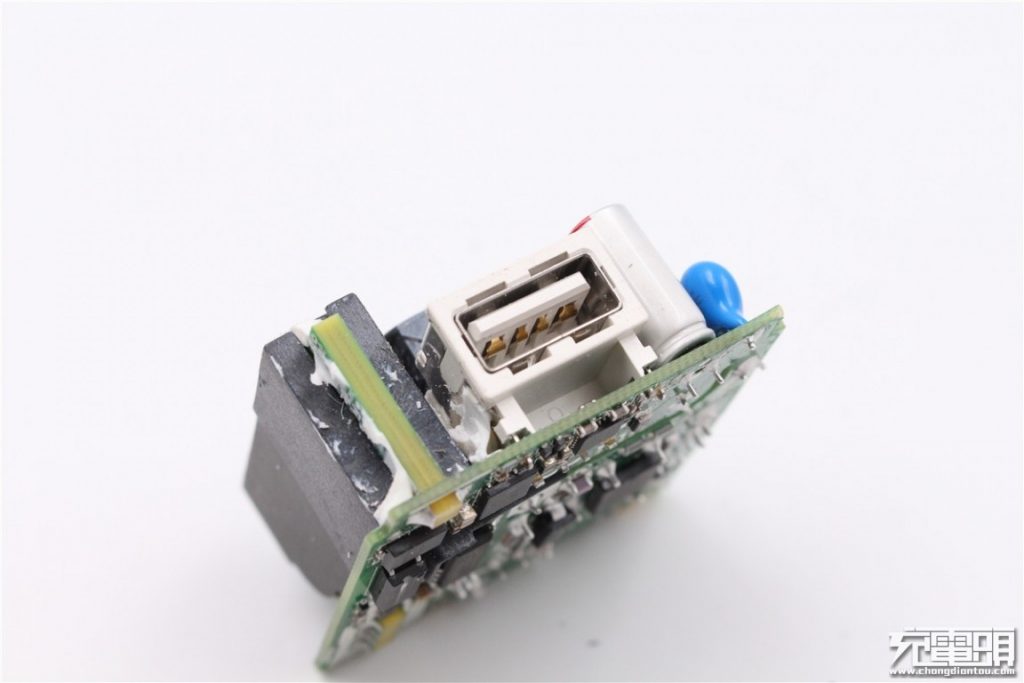
Close-up of the USB-A port.
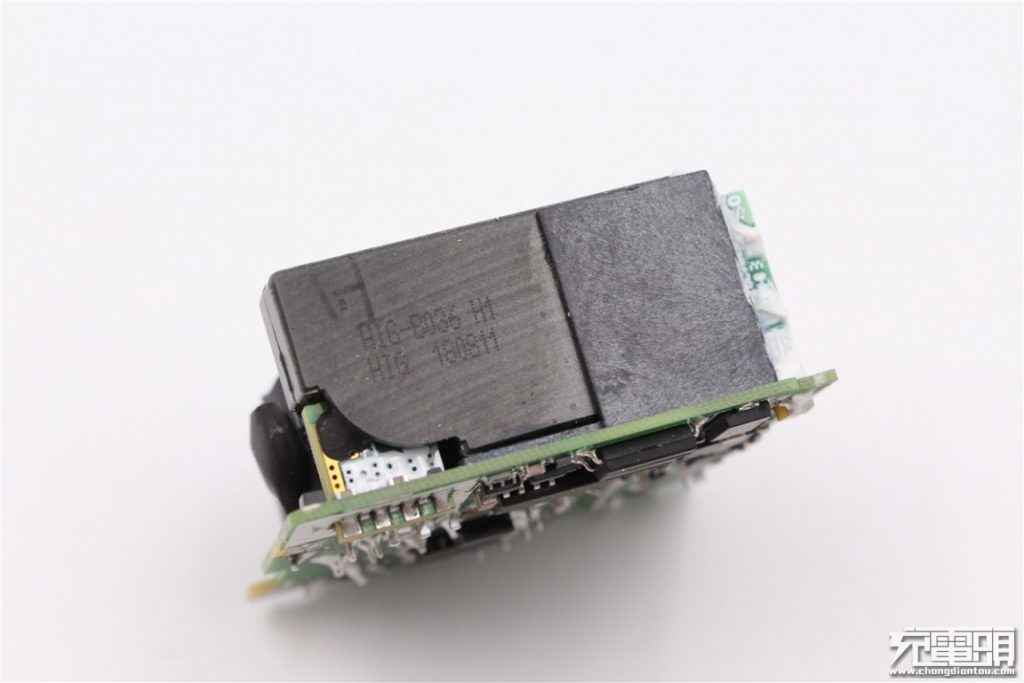
An advanced planar transformer by Janohig with HIG-B036-H1 marking. It offers higher frequency and smaller size than conventional transformers.
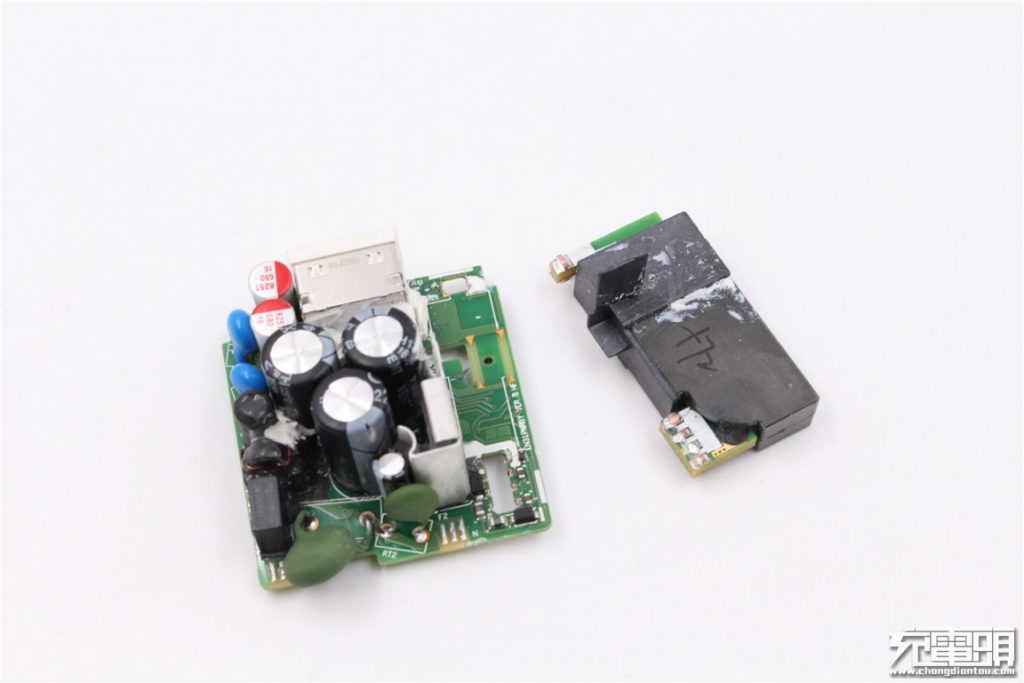
Remove the transformer, we have a primary main control switch wrapped with a heat sink.
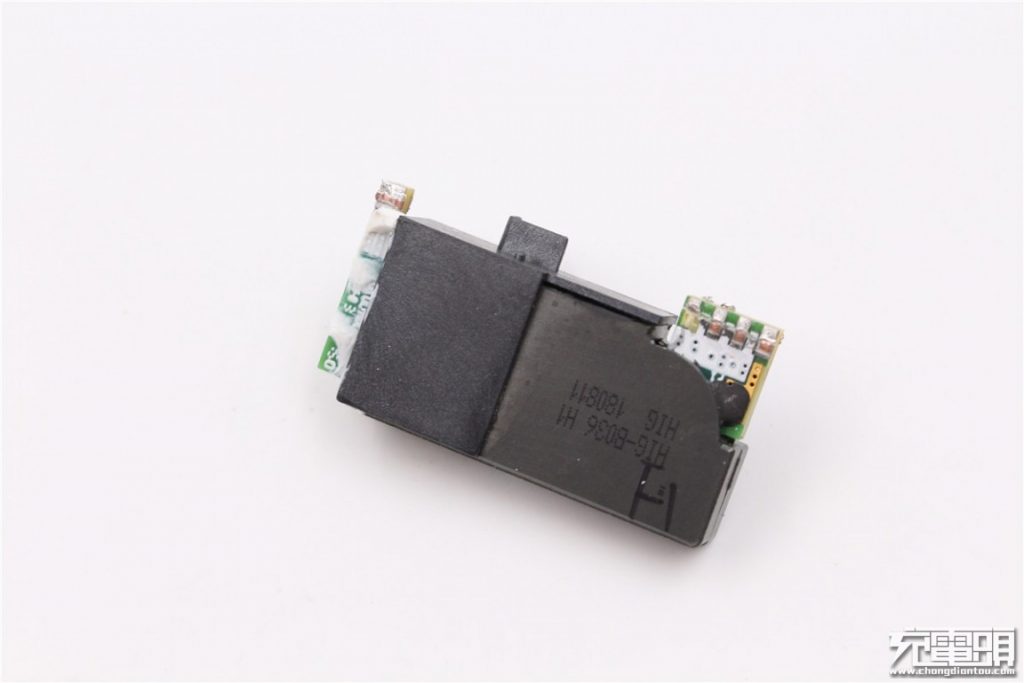
Taking a closer look at the planar transformer.
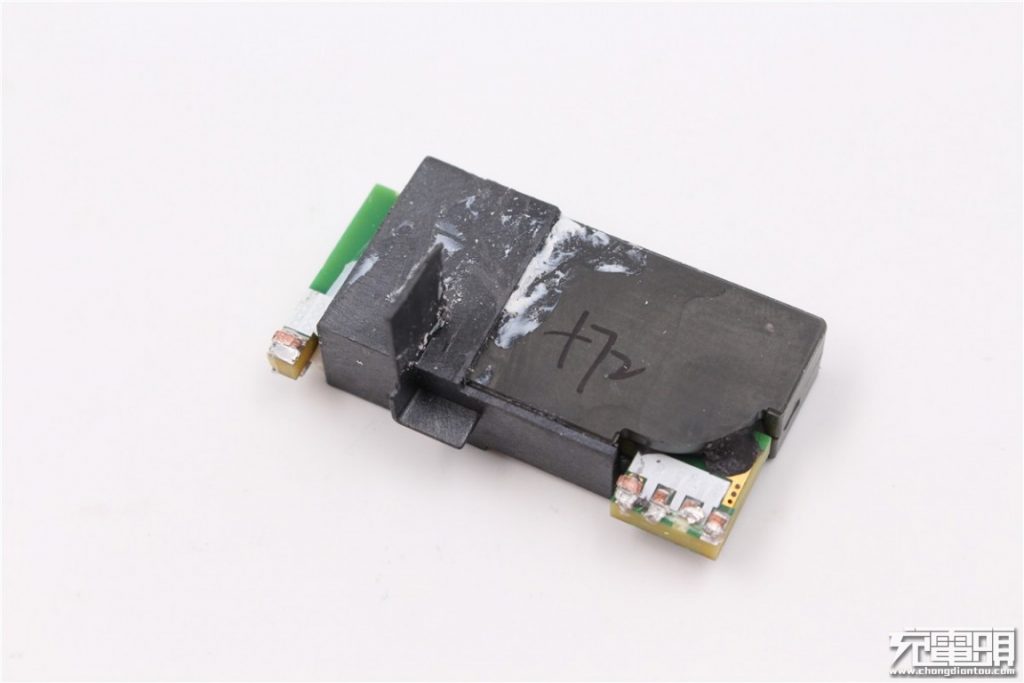
The other side of the planar transformer.
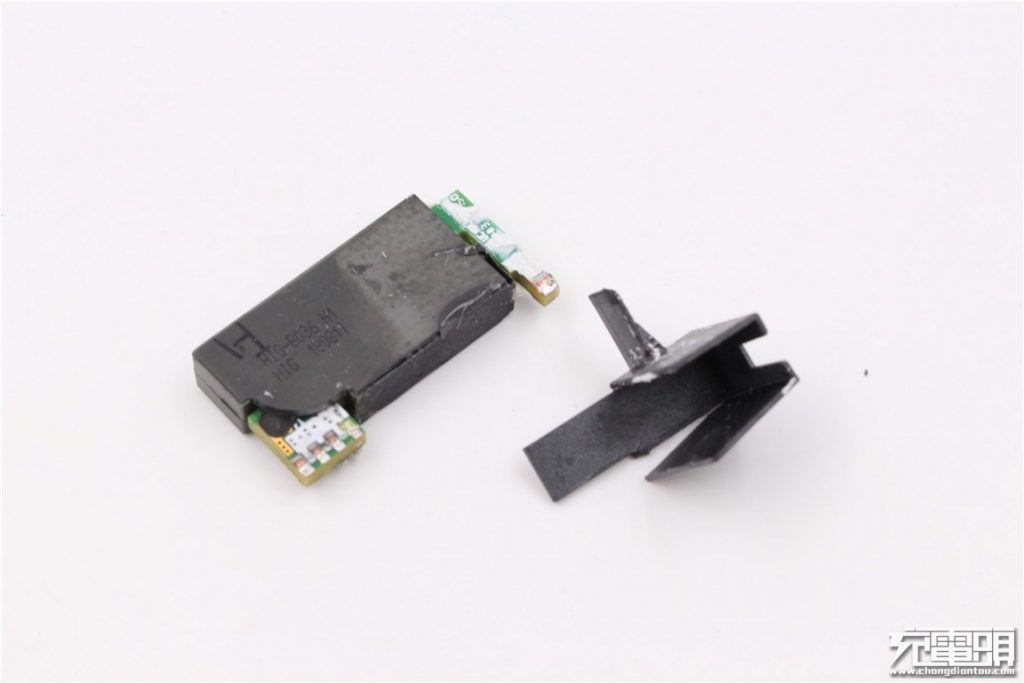
There is a plastic outer casing for the transformer that wraps around half of the transformer to enhance insulation.
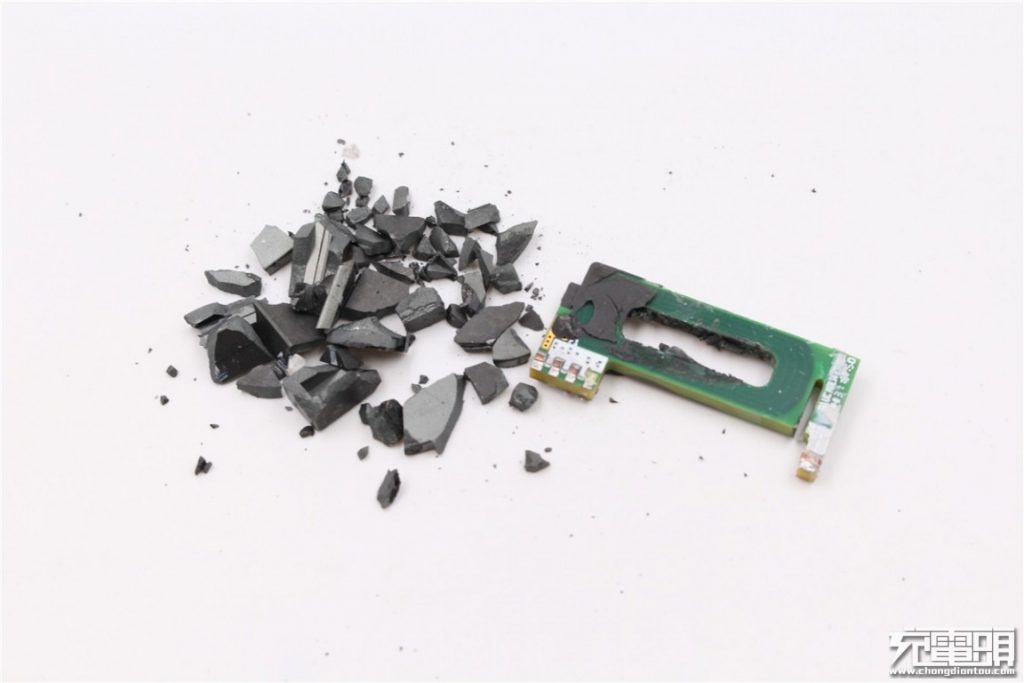
The outer black core of the transformer is a ferrite material, which is completely different from conventional transformers.
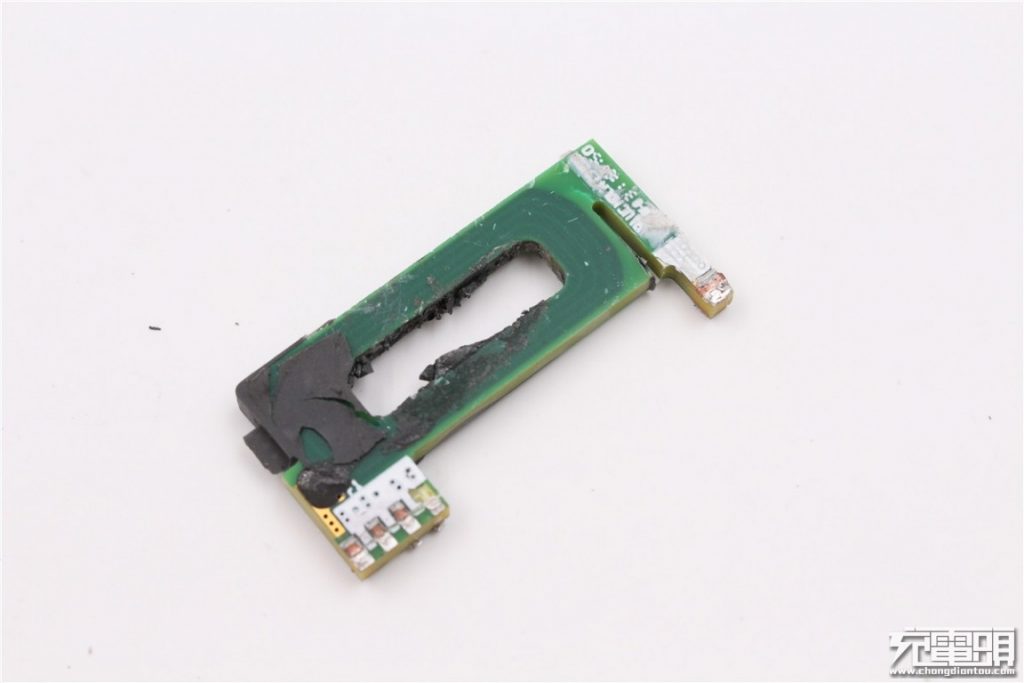
The transformer PCBA is thicker and hollowed out in the middle. The inner printed circuit can be seen from the outside. And the printed circuit here is actually the transformer coil.
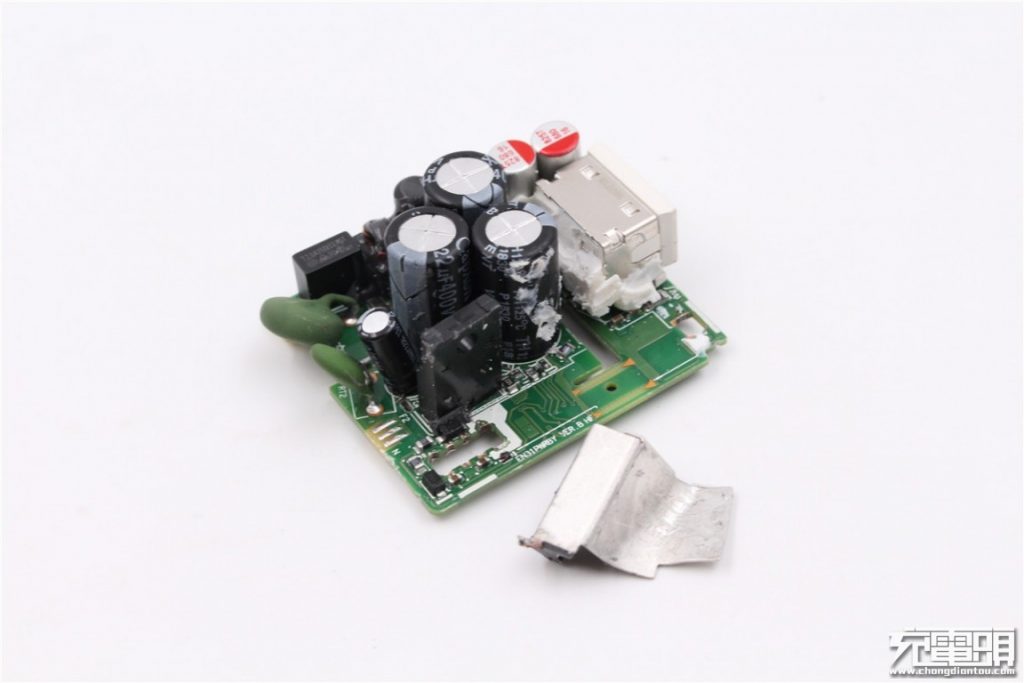
After the transformer is removed, we continue to disassemble the primary main control switch by first removing the external heat sink.
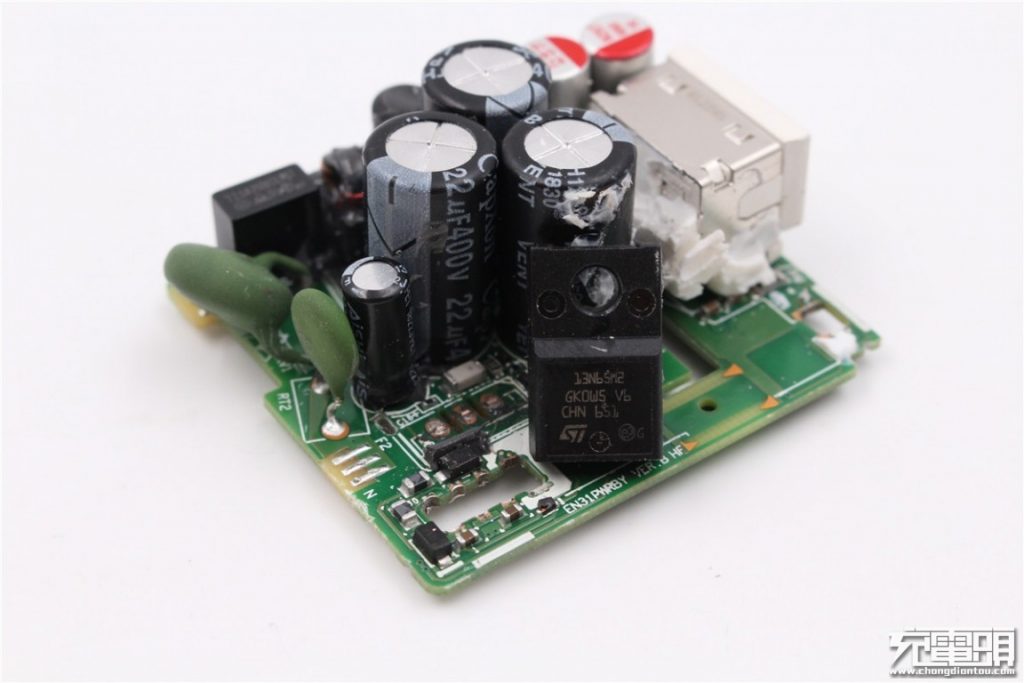
The MOSFET is from STMicroelectronics, 13N65.
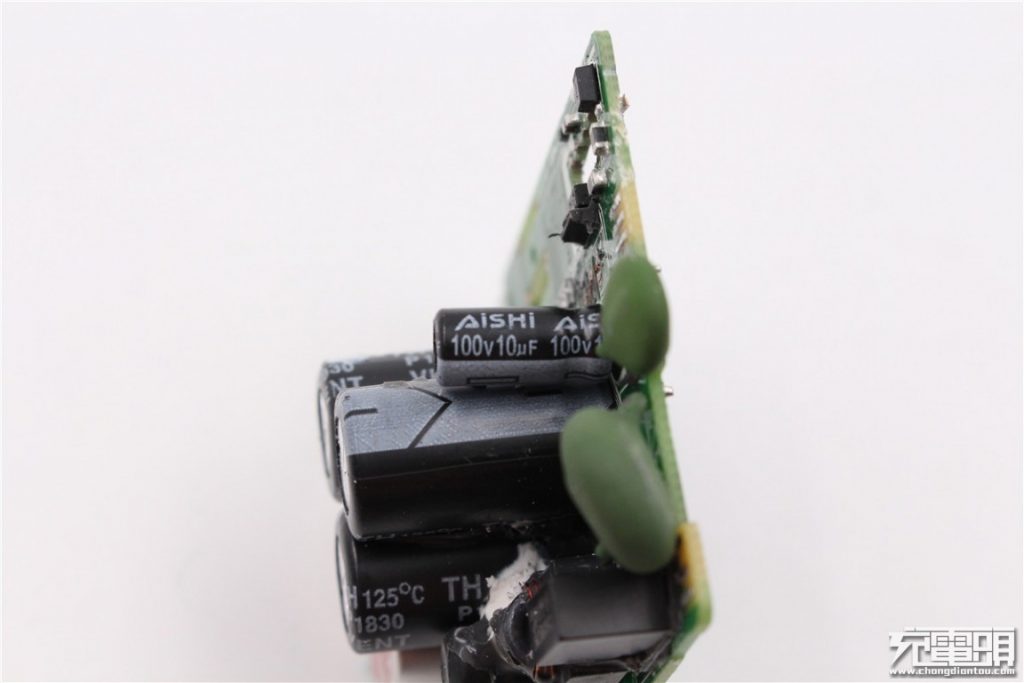
A smaller capacitor from AiSHi, specification 100V 10uF.
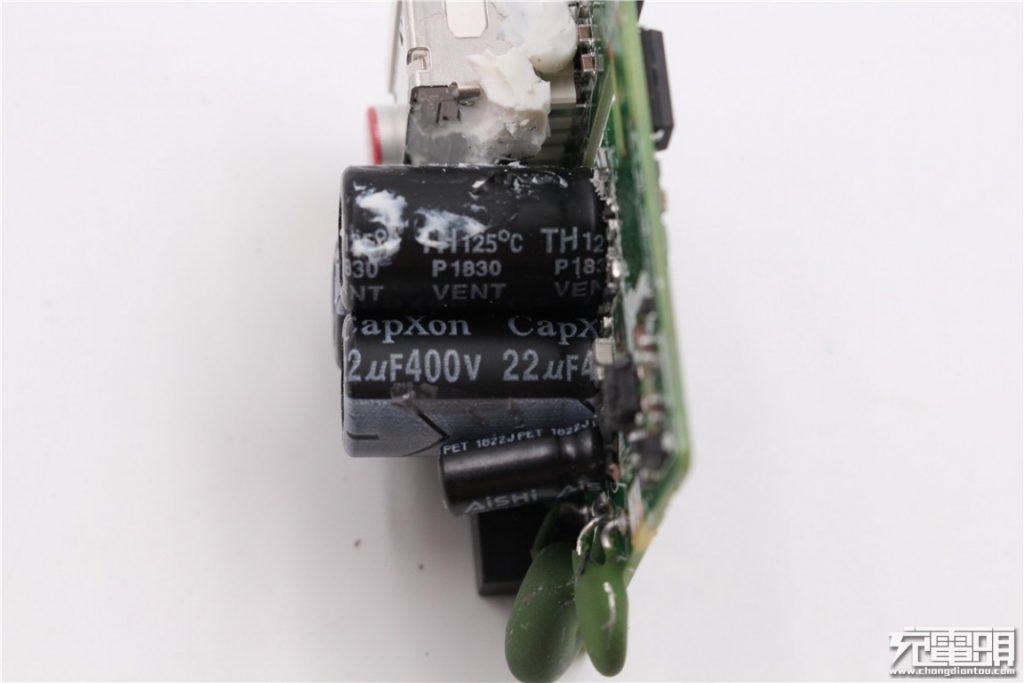
The other three larger capacity electrolytic capacitors are from CapXon, with specifications of 400V 22uF and rated 125°C (normally we see 105°C capacitors in similar chargers).
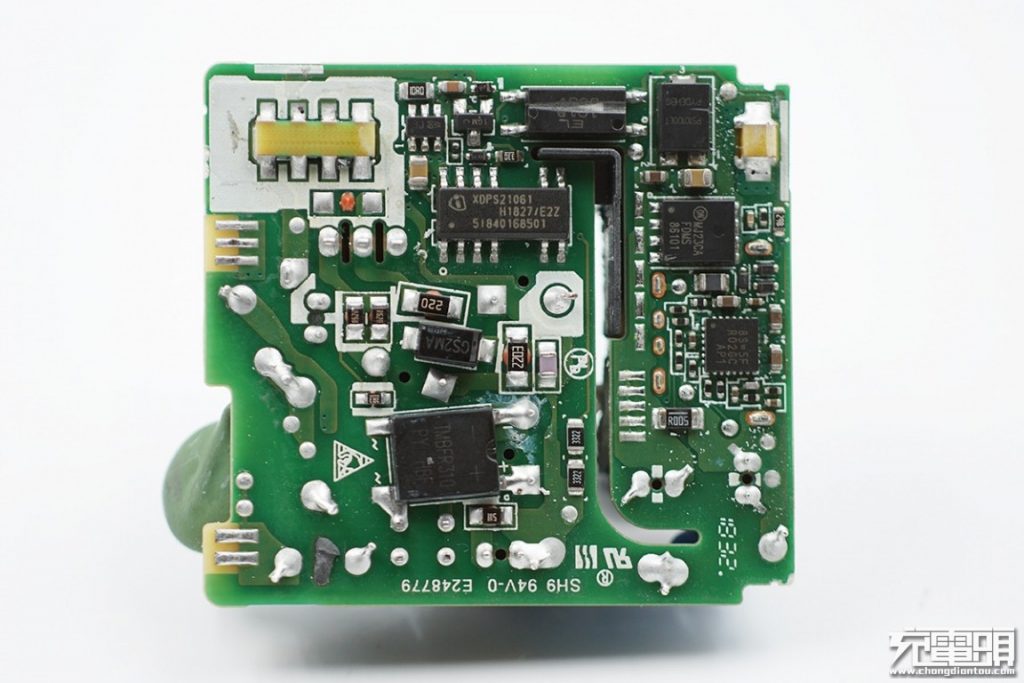
A number of SMD components on the back of the PCBA.
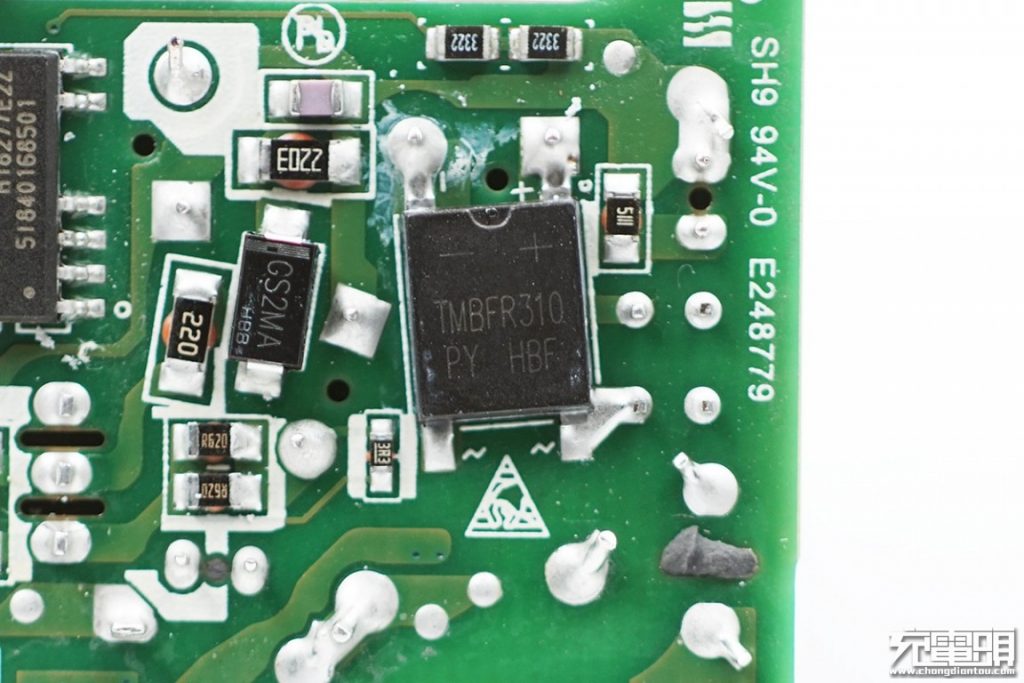
An input rectifier bridge, 3A withstand voltage 1000V.
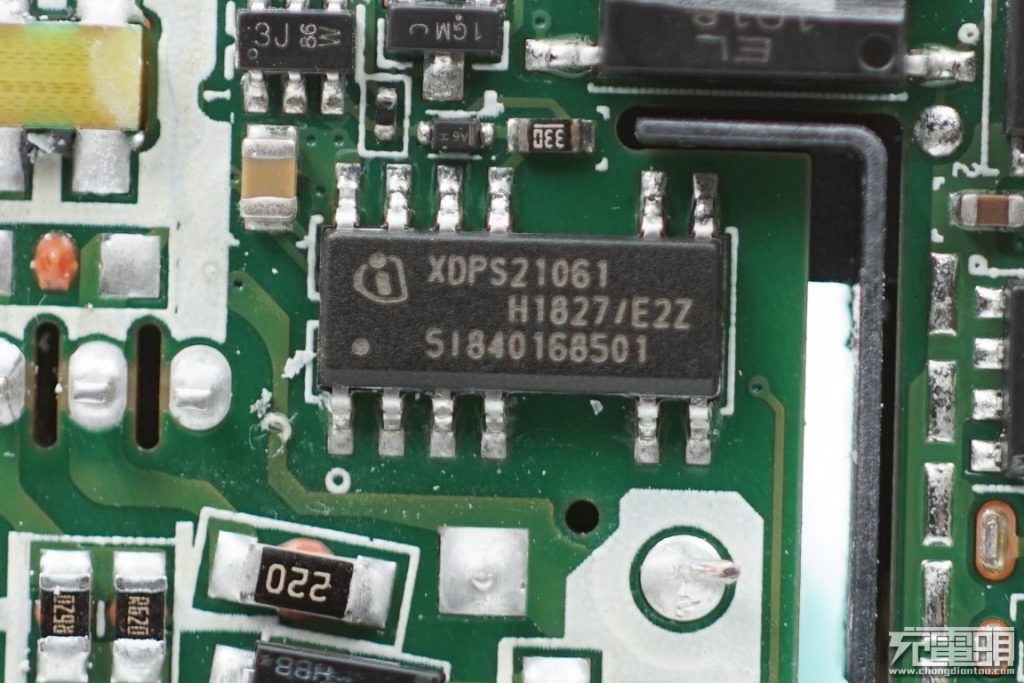
A primary side controller chip by Infineon with XDPS21061 marking. We only found the specifications of a similar product IDP2105. This is a PWM controller that can be configured via a single-pin UART interface. The following is the schematic:
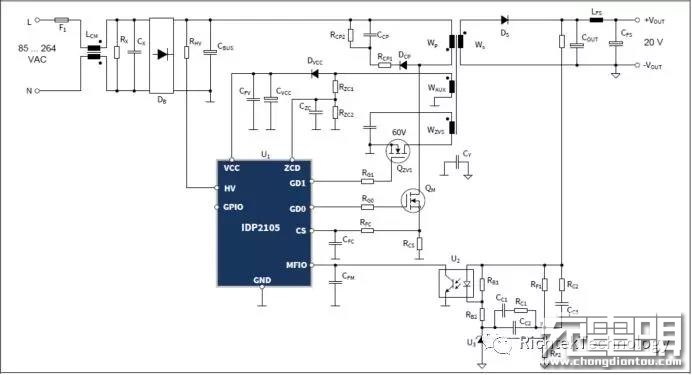
Compared to conventional flyback controllers, the key feature of the IDP2105 is the introduction of an additional winding that forces a pulse to be inserted during DCM operation to achieve a lower resonant voltage on the main winding switch node. The controller then turns on the turn-on period of the main switch to reduce switching loss.
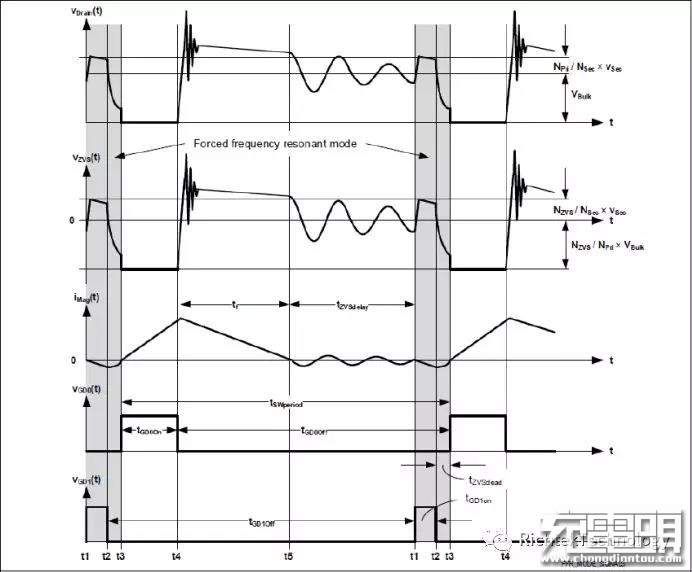
The IDP2105's maximum operating frequency is 132.6kHz-146.9kHz, while Huawei's 40W SCP charger operates at a frequency of 130kHz, just within its specifications. And it works well with the high frequency of planar transformer.
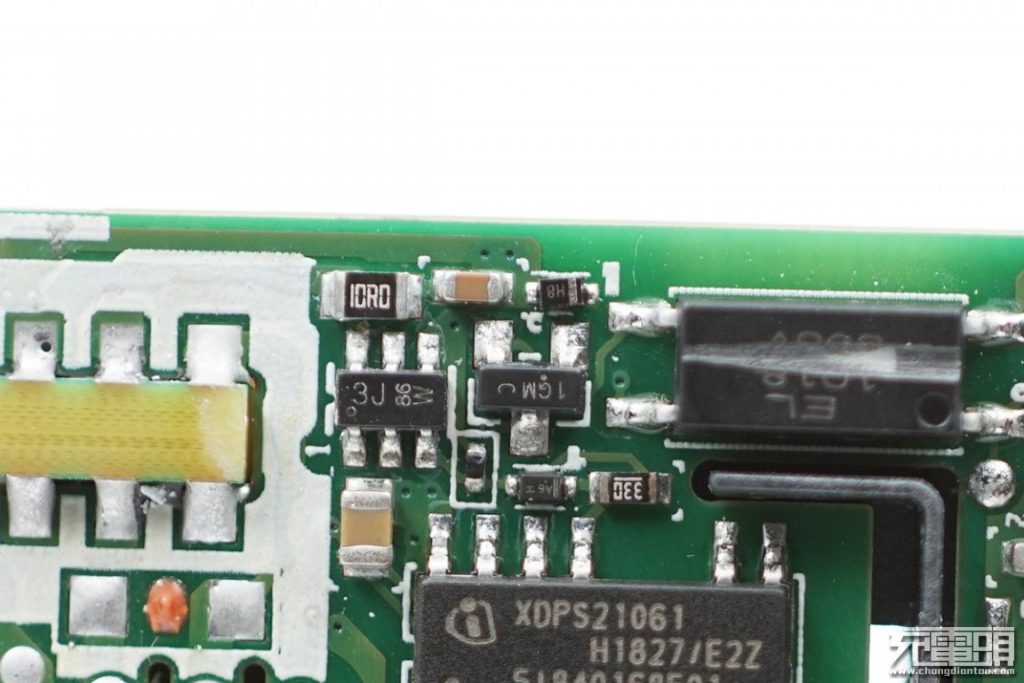
There is also a 6-pin chip with 3J86W marking; the optocoupler next to it is scratched during our teardown. An EL1018 on the top right of the picture is used for feedback regulation of the output voltage.
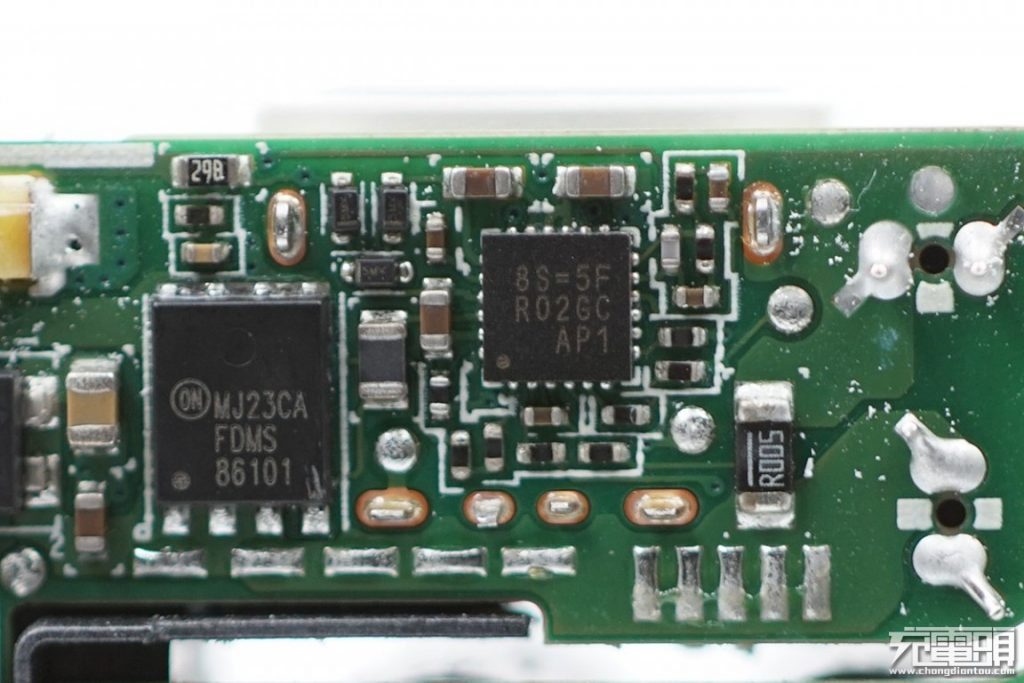
The chip with 8S=5F R20GC AP1 marking is Huawei's SCP fast charge protocol identification chip from Richtek, actual model of the chip is RT7205. On the left side is the synchronous rectifier FDMS86101 from ON Semiconductor. It is a 100V/60A, N-MOSFET with 7.5mΩ on-resistance.
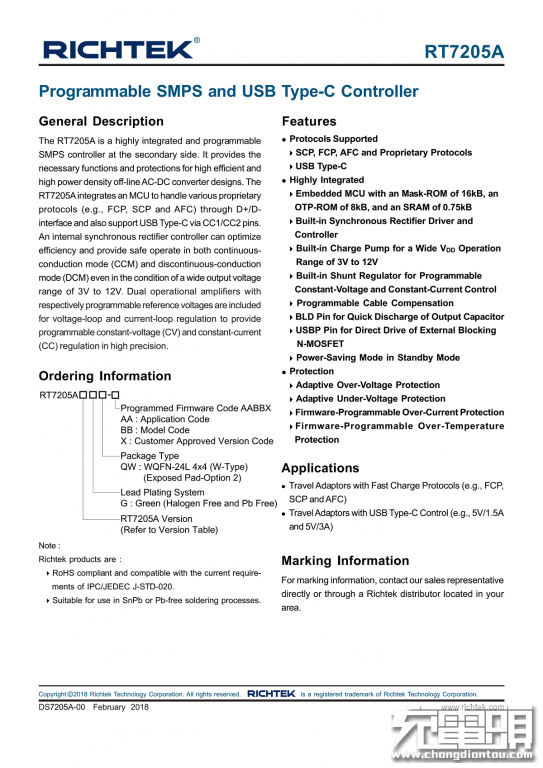
Detailed specifications of the Richtek RT7205.
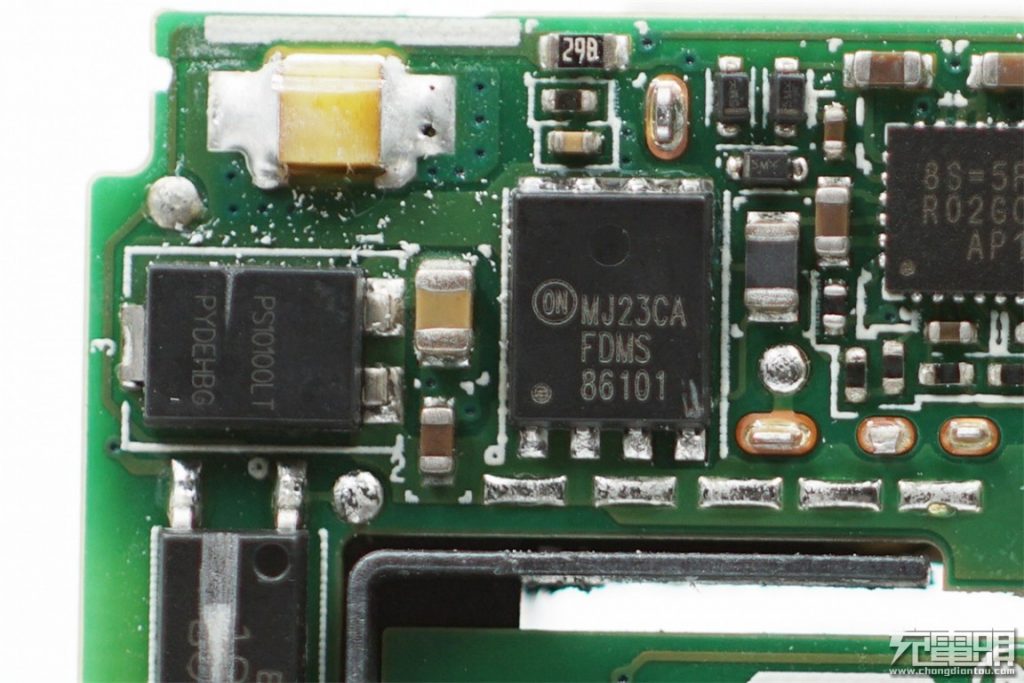
There is also a Schottky diode next to the ON synchronous rectifier to improve synchronous rectification efficiency.
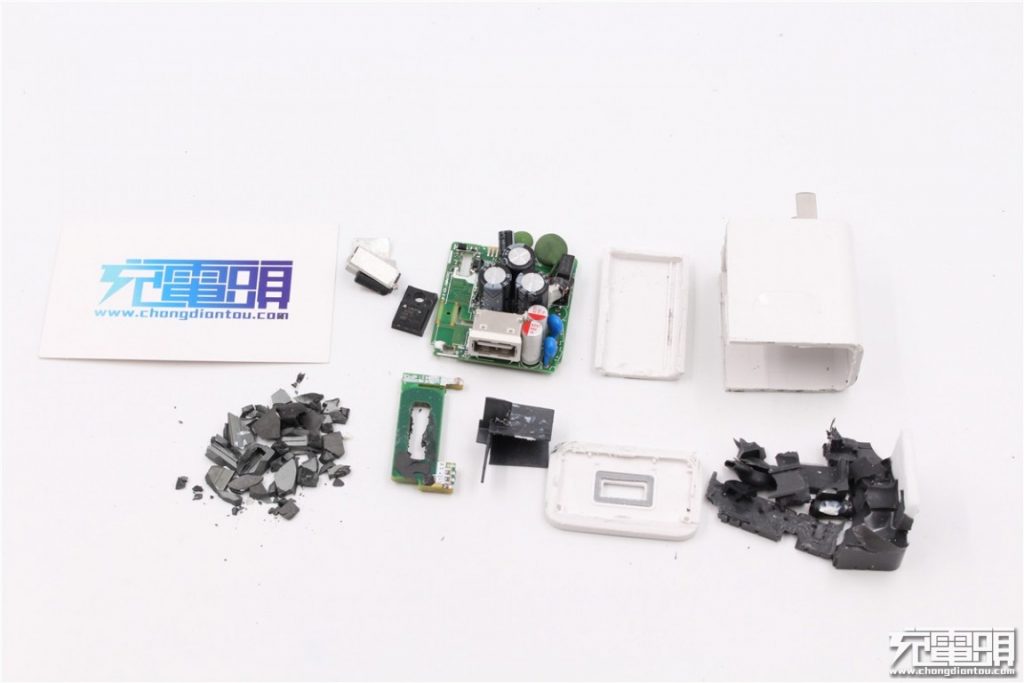
All the components.
III Conclusion
You can have all kinds of opinions over Huawei, and the quality of Chinese goods. But in this Huawei 40W SuperCharge SCP Charger, whether it's the design and engineering, use of components, or the adoption of the latest tech, it is on par with Samsung's flagship chargers, as shown in our teardown pics.
User experience however, is another story. Being a USB-A charger (most Chinese phone makes still prefer top ship with USB-A chargers and USB-A to USB-C cables), it only supports fast charging for Huawei smartphones, or QC2.0 fast charge for campatible devices. For 40W, it could also be a very decent laptop charger, but Huawei chose to go proprietary.
Pros:
Solid performance.
High-quality and advanced components.
Thoughtful overall design.
Cons:
No USB-PD support.
Source: chongdiantou

